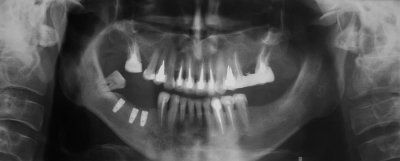Feb 2, 2015|Cosmetic Dentistry
A LOOK AT THE DENTAL IMPLANT PROCEDURE
Posted on Feb 2, 2015
New advancements in technology make oral solutions like dental implants more effective than ever before. If your dentist has suggested using dental implants to replace missing teeth, keep reading to find out what you can expect from the procedure:
New advancements in technology make oral solutions like dental implants more effective than ever before. If your dentist has suggested using dental implants to replace missing teeth, keep reading to find out what you can expect from the procedure:
The Initial Visit
The dental implant procedure takes place over a few different visits to the dentist spread out over a few months. The dentist must first examine your mouth and take X-rays and impressions of your jaw and your teeth. This gives him or her a better idea of the current condition of your mouth and how dental implants can fit into your jaw.
The dental implant procedure takes place over a few different visits to the dentist spread out over a few months. The dentist must first examine your mouth and take X-rays and impressions of your jaw and your teeth. This gives him or her a better idea of the current condition of your mouth and how dental implants can fit into your jaw.
The First Placement
Once all of the prep work is complete, the dentist can put the implants into the jaw. In most cases, local anesthesia is enough to numb the area, but some patients require more sedation. The dentist buries the implant beneath the gum. Once the implant is fully healed, it will serve as an artificial root for the replacement tooth. Since it is buried so deeply into the gum, it has time to heal completely before the dentist moves on to the next phase of the procedure.
Once all of the prep work is complete, the dentist can put the implants into the jaw. In most cases, local anesthesia is enough to numb the area, but some patients require more sedation. The dentist buries the implant beneath the gum. Once the implant is fully healed, it will serve as an artificial root for the replacement tooth. Since it is buried so deeply into the gum, it has time to heal completely before the dentist moves on to the next phase of the procedure.
The Attachment
Once the implant has fully healed, the dentist can attach a post called an abutment. This serves as the foundation for the replacement teeth. It might take a few different fittings to set you up with the right replacement teeth, which means that this final step can take a few visits. Once the replacement teeth are securely in place, you can expect optimum function and aesthetic appeal from the dental implants. This procedure helps you seamlessly replace your missing teeth. The best way to find out if dental implants are right for you is to schedule an appointment with a dentist in Belmont. If you have enough jawbone and an otherwise healthy mouth, dental implants can help you replace your missing teeth and regain confidence in your smile.
Once the implant has fully healed, the dentist can attach a post called an abutment. This serves as the foundation for the replacement teeth. It might take a few different fittings to set you up with the right replacement teeth, which means that this final step can take a few visits. Once the replacement teeth are securely in place, you can expect optimum function and aesthetic appeal from the dental implants. This procedure helps you seamlessly replace your missing teeth. The best way to find out if dental implants are right for you is to schedule an appointment with a dentist in Belmont. If you have enough jawbone and an otherwise healthy mouth, dental implants can help you replace your missing teeth and regain confidence in your smile.

Dec 15, 2022|Cosmetic Dentistry
When you’re shopping around for dentists and dental services, it can be hard to know exactly what you should be asking. To get the most from a…
When you’re pregnant, the wellbeing of the child you are carrying is your primary focus. It’s important, though, that you don’t neglect…
